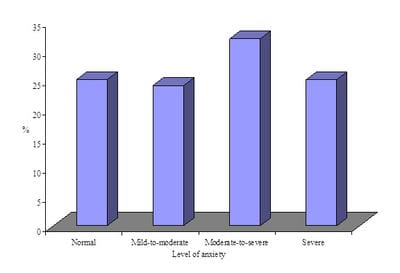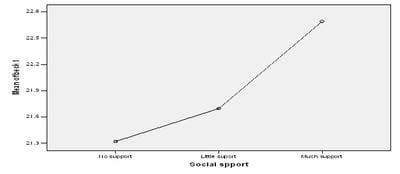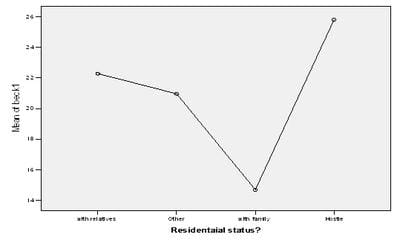Influence of Socio Demographic Factors on Anxiety among Third Year Student in Ahfad University
Mohamed Abasher Haj Ali S.1*, Abdul-Moniem Mohammed El-Amin M.2, Azhari Mustafa Abdalla W.3
DOI: https://doi.org/10.17511/ijphr.2017.i1.01
1* Sana Mohamed Abasher Haj Ali, Assistant Professor, College of education, Psychology division, King Faisal University, Al Ahsa, Kingdom of Saudi Arabia.
2 Maha Abdul-Moniem Mohammed El-Amin, Assistant Professor, College of education, Psychology division, King Faisal University, Al Ahsa, Kingdom of Saudi Arabia.
3 Wafa Azhari Mustafa Abdalla, Counselor, Greative Centre for Rehabilitation, Doha, Qatar.
Introduction: Anxiety disorders are common in the general population around the world. They constitute a substantial proportion of the global burden of disease, and are projected to form the second most common cause of disability by 2020. The main objective of the study is to find out if third year student in Ahfad University, show some extent of anxiety and whether this is related to some social demographic factors. Methods: Beck anxiety Inventory (BAI) was used to measure anxiety level in randomly selected 182 students from different schools within the university campus. Statistical analysis was performed by using SPSS 16. Results: We found that the prevalence of anxiety was significant in third year students related to their age, economic and residential status and also related to their academic performances stating that students with low social demographic factors and with academic problems will experience higher levels of anxiety than those with good social demographic status and with no academic problems. Conclusion: From this study it is clear that the prevalence of anxiety was significant in third year students related to their age, economic and residential status and also related to their academic performances. We recommend more studies for further understanding the relation of anxiety with socio demographic factors.
Keywords: Anxiety, Socio demographic factors, University student, Sudan
| Corresponding Author | How to Cite this Article | To Browse |
|---|---|---|
| , Assistant Professor, College of education, Psychology division, King Faisal University, Al Ahsa, Kingdom of Saudi Arabia. Email: |
Ali SM, El-Amin MA, Abdalla WA. Influence of Socio Demographic Factors on Anxiety among Third Year Student in Ahfad University. Public Health Rev Int J Public Health Res. 2017;4(1):1-8. Available From https://publichealth.medresearch.in/index.php/ijphr/article/view/54 |


 ©
© 


